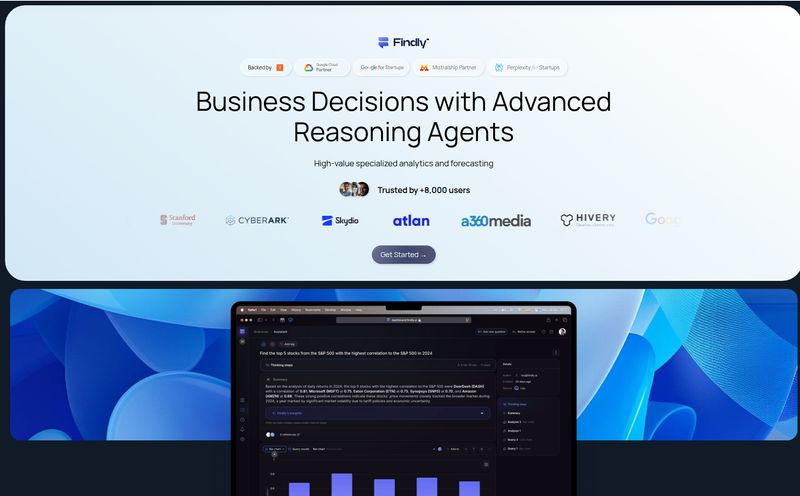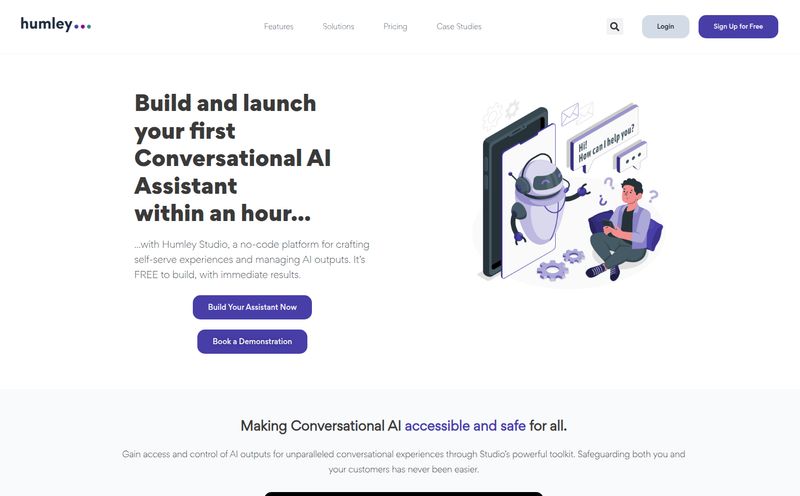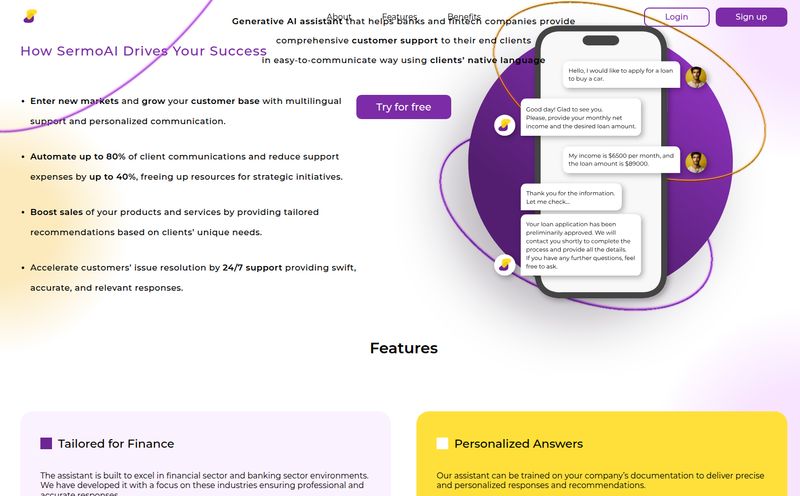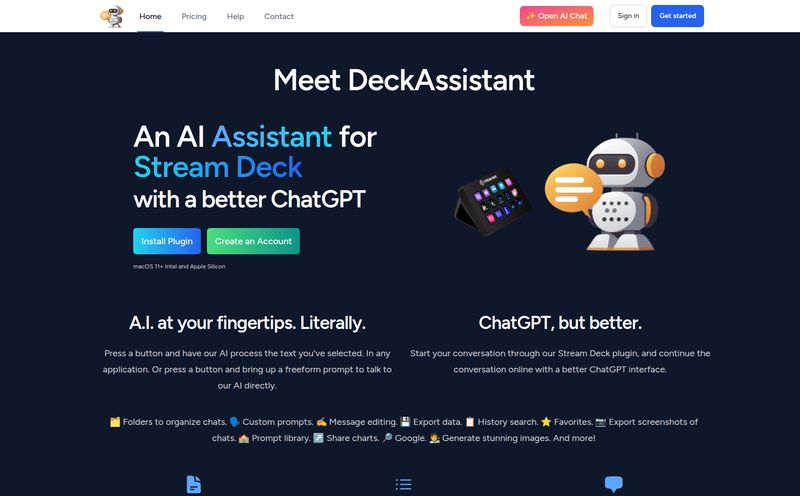The whole remote and hybrid work thing has been a wild ride. As someone who's managed teams and obsessed over SEO traffic for years, I've seen the good, the bad, and the… weird. The biggest headache for many managers? Visibility. Are people actually working, or are they perfecting their sourdough starter on company time? It's a question that keeps a lot of leaders up at night.
And into this chaos steps a whole army of tools promising to be the answer. Today, we’re looking at one of them: Time Champ. It markets itself as a productivity and employee monitoring software. But I've been around this block a few times, and I know these tools can be a double-edged sword. So, let’s pull back the curtain and see if Time Champ is the helpful co-pilot it claims to be, or just a backseat driver with a clipboard.
So What Exactly Is Time Champ Supposed to Do?
At its core, Time Champ is a platform designed to give businesses a clearer picture of what’s happening during the workday. Think of it less as a simple punch-card system and more like a comprehensive dashboard for your team's entire digital workflow. The idea is to move beyond just tracking hours and get into the nitty-gritty of how that time is spent. It's built for basically any modern team setup – fully remote, in-office, or a mix of both.
It aims to answer questions like: How much time are we really spending on Project X? Is anyone on the verge of burnout from a crazy workload? Where are the bottlenecks in our process? It’s all about gathering data to, in theory, make smarter decisions.
The Core Features That Actually Matter
A features list is just a list until you understand how it actually impacts your day. Time Champ has a lot to offer, but let's talk about the parts that will likely make or break your decision.
More Than Just a Punch Clock: Attendance & Time Tracking
Okay, the automatic attendance is pretty slick. No more chasing people to fill out timesheets (we've all been there). The software tracks when your team is active, giving you a clear record. But it goes deeper. You can tie time tracking directly to specific projects and tasks. For an agency or any client-facing business, this is huge for billing and project profitability analysis. You can finally have some hard data to back up your estimates.
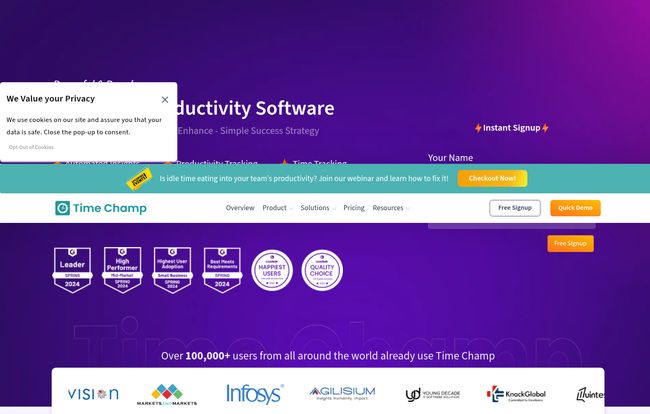
Visit Time Champ
Seeing the Work, Not Just the Hours: Productivity Monitoring
Here’s where things get interesting, and frankly, a bit controversial. Time Champ offers a suite of monitoring tools, including tracking app and website usage, and even taking screenshots of employee screens at set intervals. You can run it in two modes: an 'interactive' mode where the employee has some control, and a 'silent' mode where they... don't. This is the feature that makes some people sweat. The goal is to ensure work is being done, but it walks a very fine line between oversight and surveillance. I’ve always felt that how you introduce a feature like this says more about your company culture than the feature itself.
The AI-Powered Crystal Ball: Insights and Analytics
This is where Time Champ tries to stand out. It’s not just about collecting data; it’s about interpreting it. The platform uses what it calls “AI Insights” to spot trends. For example, it might flag that a team member’s activity on productive apps has dipped, which could be an early sign of burnout or disengagement. It's like having a digital nervous system for your team, constantly looking for patterns that a busy manager might miss. It’s a powerful concept, but the execution has to be spot-on for it to be more than just a fancy gimmick.
The Big Question: Is Time Champ a Friend or Foe?
Every tool has its angels and its demons. In my experience, the effectiveness of something like Time Champ depends entirely on how it's used.
On the one hand, the potential for actionable insights is undeniable. Being able to see that 30% of your team's time is getting sunk into an inefficient internal process is gold. That’s not about blaming employees; it’s about fixing broken workflows. It can help you fairly distribute work, justify hiring more people, and protect your top performers from burning out. The integrations with project management apps like Jira mean it can fit into a workflow you already have, which is a big plus.
However, we have to talk about the elephant in the room: privacy. The level of monitoring, especially with features like screenshots and silent tracking, can feel invasive. If you don't have a high-trust culture to begin with, rolling out a tool like this can feel like an accusation. It can seriously damage morale if employees feel like they’re constantly being watched over their shoulder. Transparency is absolutely critical here.
Let’s Talk Money: Breaking Down Time Champ's Pricing
Alright, let's get down to the brass tacks. The pricing page looks straightforward at first glance, but there are some details you need to catch. It's a classic SaaS model with a few twists.
| Plan | Price | Good For |
|---|---|---|
| Starter | $3.90 /user/month | Basic time tracking and attendance for smaller teams. |
| Professional | $6.90 /user/month | Growing teams needing more detailed analytics and productivity reports. |
| Enterprise | $13.90 /user/month | Large organizations wanting advanced features like live video feeds and on-premise deployment. |
Now, here’s the kicker. That shiny base price? It's just the beginning. The pricing structure is very à la carte. Want screen recording? That's an add-on. Keylogger? Add-on. The dedicated project management module? You guessed it, another add-on. This feels a bit like a budget airline—the ticket looks cheap, but then you're paying extra for your seat and your bag. You need to be very clear about which features are must-haves for your team and calculate the real final cost.
Oh, and one more thing I almost missed at the bottom of the page: a one-time “implementation and training cost of $4 per user license” with a minimum charge. This isn't a dealbreaker, but it's something to budget for. Surprises in invoices are never fun.
My Honest Take as an SEO and Team Lead
So, would I use Time Champ? The answer is a classic SEO-favorite: it depends.
If I were running a large, data-driven team—say, a call center, a data entry department, or a big remote customer support crew—the benefits are pretty obvious. The ability to optimize schedules, track project hours accurately, and ensure service levels are met is invaluable. In these cases, the tool isn't just about monitoring; it's about operational efficiency.
But for a small, creative team built on autonomy and trust? I'd be more hesitant. The risk of making my team feel micromanaged might outweigh the benefits of the data. I'd probably stick to the project-based time tracking and steer clear of the more invasive monitoring features. You simply can't slap a piece of software on top of a bad company culture and expect it to fix things. It's a tool, not a magic wand.
Frequently Asked Questions About Time Champ
- Can Time Champ monitor employees without them knowing?
- Yes, it has a 'silent mode' feature that allows for non-intrusive tracking. However, it's widely considered best practice to be transparent with your team about any monitoring software being used to maintain trust.
- Is Time Champ expensive?
- The base plans are competitively priced, starting at $3.90 per user. However, the final cost can increase significantly once you add necessary features from their list of add-ons, plus the one-time implementation fee. It's important to calculate your total cost based on your specific needs.
- What is Time Champ best for?
- It's particularly well-suited for businesses that need to track time against specific projects for billing, manage remote or hybrid teams, and improve operational efficiency through data analysis. It's strong for roles where productivity can be measured through computer-based activity.
- Does it integrate with other tools?
- Yes, the website mentions integrations with popular project management and collaboration apps, like Jira. This allows it to fit into your existing tech stack rather than completely replacing it.
- Is Time Champ hard to set up?
- The company claims you can install the tracking agent in under 10 seconds on Windows, Mac, or Linux. The initial setup seems straightforward, but there is an associated implementation and training fee, suggesting a more involved initial configuration process for the entire platform.
The Final Verdict on Time Champ
Time Champ is a seriously powerful tool. There’s no doubt about it. It offers a deep well of data that, if used correctly, could genuinely help a business become more efficient and a manager become more attuned to their team's workload. The dashboard is clean, and the feature set is comprehensive.
But it comes with a responsibility. The decision to use it is as much a cultural one as it is a financial or operational one. You have to be prepared to have open conversations about privacy and purpose. And you absolutely have to be mindful of the pricing structure to avoid sticker shock. If you go in with eyes wide open, ready to use its data for empowerment rather than enforcement, Time Champ could be a valuable ally in navigating the modern workplace. If not, it could just be an expensive way to erode trust.
